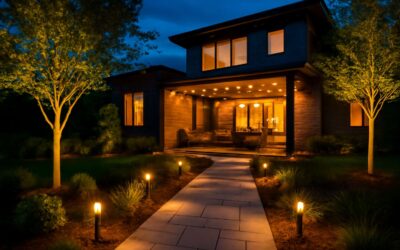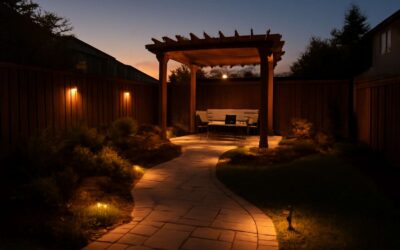Outdoor Lighting Motion Sensor SEO Blueprint
Section 1: Benefits and Use Cases
Nighttime security in South Africa can hinge on a single, intentional design choice. Section 1: Benefits and Use Cases—when darkness yields to motion, danger is deterred and discovery is easier. A practical stat: intrusions can be reduced by up to 39% with smart lighting. A well-placed sensor turns shadow into an ally, lighting entries just long enough to deter a breach and reveal what lies beyond hedges or fences.
- Perimeter safety for homes and estates
- Guided paths that reduce trips and falls
- Smart integration with alarms and cameras
Beyond safety, it shapes curb appeal and energy use. For SA homes, the flexibility to schedule, dim, or pair sensors with cameras makes the outdoor lighting motion sensor a versatile ally in today’s smart landscapes.
Section 2: Key Features and Technical Specs
“Light is the night’s quiet guardian,” a line I’ve carried into practice, and the outdoor lighting motion sensor lends surgical precision to South Africa’s evenings.
Key features and specs keep form and function in balance:
- Detection: passive infrared and dual-technology sensing for reliable coverage up to 12 meters
- Optics and power: adjustable LEDs, 3000–5000K color temperature, IP65 weatherproof housing
- Smart controls: adjustable timeouts and sensitivity, with seamless camera and alarm integration
Mounting and durability, operation and energy use. For SA homes, the ability to dim or schedule aligns with energy goals and reduces light trespass. This outdoor lighting motion sensor configuration anchors a lifecycle of safety, privacy, and energy stewardship.
Section 3: Installation, Placement, and Wiring
Light is the first language of safety, and South African evenings respond to intention with a glow that feels ceremonial. An outdoor lighting motion sensor should be installed with choreography: precise placement that respects privacy while widening the circle of security. The result is illumination that awakens only when needed, elevating both safety and curb appeal.
Placement and wiring demand careful planning, balancing sight lines with the rhythms of daily life. Consider these practical cues:
- Mount height 1.8–3.0 m and angle 15–45 degrees for broad, natural coverage.
- Aim away from windows to minimize glare and preserve privacy.
- Keep the sensor field clear of vegetation, ornaments, and reflective surfaces.
- Use IP65-rated housings and weatherproof conduit to endure SA’s climate.
For the wiring, run buried or in sheltered conduit, label circuits, and install compliant sealing and grounding. The right setup ensures reliability for the outdoor lighting motion sensor, delivering a quiet, trusted illumination that never shouts.
Section 4: SEO, Content Strategy, and Buyer’s Guide
“The night reveals what the day hides,” and in South Africa that revelation is a promise—safety, beauty, and visibility. Our SEO blueprint for outdoor lighting motion sensor content aligns intent with local nuance, turning curiosity into confident clicks.
- Product comparisons tailored to SA homes
- FAQs on detection ranges and lumens
- Local case studies and outcomes
Content strategy centers on the buyer’s journey, regional language, and seasonal rhythms—not mere specs. We map intent to formats—guides, FAQs, and brief case studies—covering SA concerns around efficiency and performance for outdoor lighting motion sensor.
This approach uses meta descriptions, structured data, and internal linking to guide readers to trustworthy, locally relevant information. Every page becomes a beacon for South African households seeking safer, brighter evenings.


0 Comments